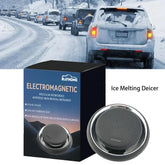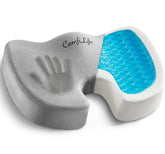The Psychology of Live Shopping: Why people Love It
In recent years, live shopping has emerged as a revolutionary way to shop, combining the thrill of live entertainment with the convenience of online purchasing. This innovative trend has taken social media platforms by storm, transforming the way consumers interact with brands and products. But what is it about live shopping that captivates us so deeply? Let’s delve into the psychology behind this phenomenon and explore why we love it.
## The Social Connection
At its core, live shopping taps into our inherent desire for social interaction. Humans are social creatures, and the ability to engage with hosts, brands, and fellow shoppers in real-time creates a sense of community. During a live shopping event, viewers can comment, ask questions, and share their thoughts, fostering a feeling of belonging. This interactive experience is a stark contrast to traditional online shopping, where consumers often feel isolated.
## The Thrill of the Hunt
Live shopping events often incorporate limited-time offers, exclusive deals, and flash sales, which trigger a sense of urgency. This taps into the psychological principle of scarcity, where the fear of missing out (FOMO) drives consumers to make impulsive decisions. The adrenaline rush that comes from snagging a deal before it’s gone can be exhilarating, making the shopping experience feel more like a game than a chore.
## Instant Gratification
In our fast-paced world, instant gratification has become a significant driver of consumer behavior. Live shopping satisfies this craving by providing immediate access to products and services. Viewers can see items demonstrated in real-time, ask questions, and make purchases with just a few clicks. This immediacy enhances the shopping experience, as consumers feel empowered to make decisions on the spot.
## The Power of Storytelling
Live shopping is not just about selling products; it’s about storytelling. Hosts often share personal anecdotes, product backgrounds, and demonstrations that resonate with viewers. This narrative approach creates an emotional connection between the consumer and the product, making it more appealing. When consumers feel a connection to a product’s story, they are more likely to make a purchase, as it aligns with their values and desires.
## Trust and Authenticity
In an age where consumers are increasingly skeptical of traditional advertising, live shopping offers a refreshing sense of authenticity. Viewers can see products in action, hear honest reviews, and witness genuine interactions between hosts and customers. This transparency builds trust, making consumers feel more confident in their purchasing decisions. When a host shares their personal experience with a product, it feels more relatable and credible than a polished advertisement.
## The Influence of Social Proof
Social proof is a powerful psychological phenomenon where individuals look to others for guidance on how to behave or make decisions. During live shopping events, viewers can see real-time reactions from others, including likes, comments, and shares. This collective enthusiasm can influence purchasing behavior, as consumers are more likely to buy a product that others are excited about. The sense of community and shared experience amplifies the appeal of live shopping.
## Conclusion
Live shopping is more than just a trend; it’s a reflection of our evolving relationship with technology, commerce, and social interaction. By understanding the psychological factors that drive our love for live shopping, brands can create more engaging and meaningful experiences for consumers. As this phenomenon continues to grow, it will be fascinating to see how it shapes the future of retail and consumer behavior. Whether it’s the thrill of the hunt, the desire for social connection, or the appeal of authenticity, one thing is clear: live shopping has captured our hearts and transformed the way we shop.


















